Ingredients
 | A bowl, one with a flat bottom is easiest |  | Some thin foam or something which floats |
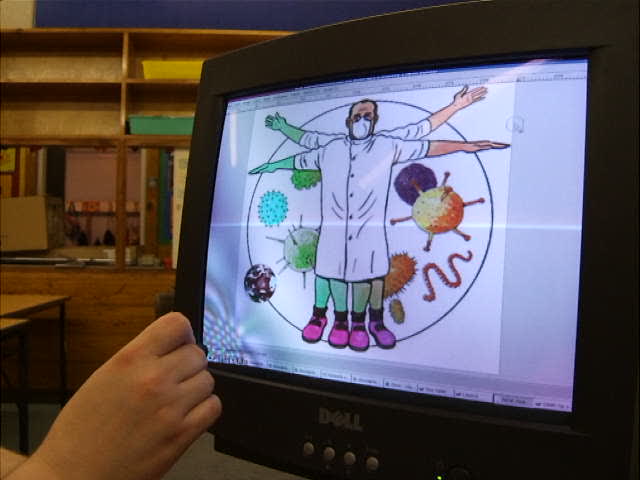 | A magnet (not a flexible one) |  | A needle, pin or other small thin piece of iron or steel. |
Instructions
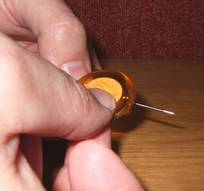 Stroke all the way along the needle with the magnet 5-6 times in the same direction.
Stroke all the way along the needle with the magnet 5-6 times in the same direction.
Cut a piece of foam large enough for the needle to sit on comfortably.
Fill the bowl with enough water that there is plenty of space for the foam to float without touching the sides.
Place the needle in the centre of the foam and float it in the bowl.
Wait for a few seconds until the needle stops turning - which direction is it pointing in?
Result
You should find that one end of the needle is pointing north and the other south. You would just need to mark which end is pointing north and you will have built a perfectly functional (if slightly cumbersome) compass.
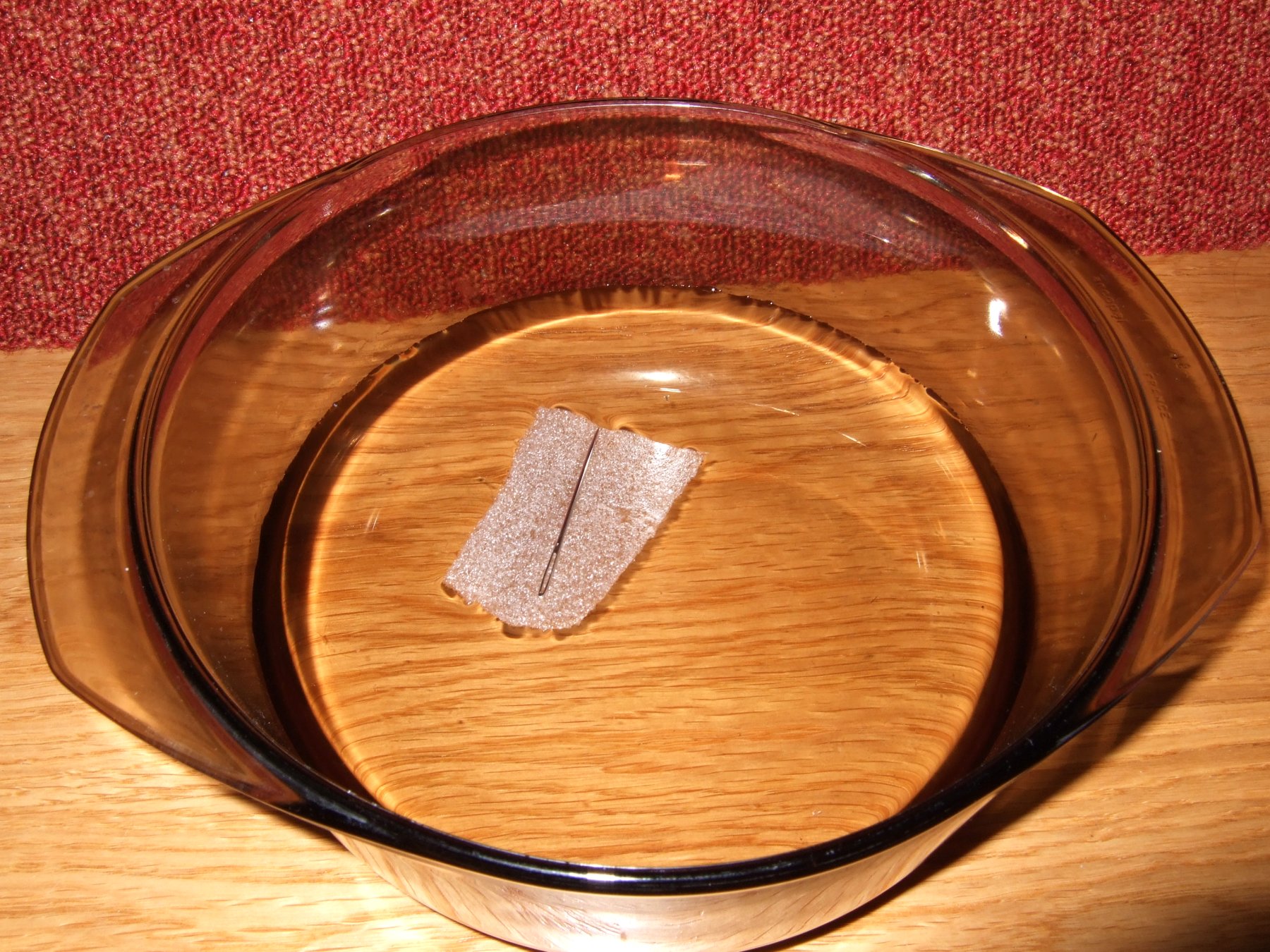
Explanation
When you stroke the needle you turn it into a weak magnet. So when you let it spin freely by letting it float on water one end will point north and the other south, you have built a compass!
Why does a compass point north?
The north end of magnets are attracted to the South end of other magnets and vice versa.
The earth is a giant magnet which has, very close to the real north pole, its magnetic south pole . This means that your needle's magnetic north pole is attracted to this, so the needle points towards the real north.

Why does stroking the needle with a magnet make the needle magnetic?
Materials that are attracted to magnets, like iron or steel, have an internal structure a bit like thousands of tiny magnets. These are normally pointing in lots of different directions and so they cancel each other out and overall the metal is not magnetic. But if you put them near a magnet they will all line up. The closer the magnet gets then the stronger the magnetic field is and the better they line up.
 |  |
| Normally the tiny magnets are pointing in lots of directions. | If you put a magnet near they all point towards it. |
If you just take the magnet away again the tiny magnets will keep trying to point towards it and not be pointing in a useful direction. But if you move the magnet along the needle they will all end up pointing in the same direction forming a magnet
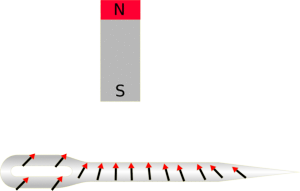 | 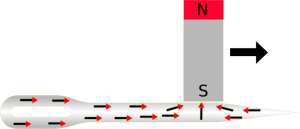 |
| If you just pull the magnet away the magnets will point in the wrong direction. | If you stroke the magnet along the needle it will line up all the tiny magnets so the needle becomes magnetic. |
 How did people make the first compasses?
How did people make the first compasses?
Before anyone had any magnets it was obviously difficult to make compasses, however luckily a form of iron ore called magnetite can be magnetised by the earth's magnetic field as it solidifies. This is often called lodestone and can be dug out of the ground pre-magnetised, and can be hung on a string and will act as a compass.
What are the tiny magnets?
Atoms are made up of a positively charged nucleus surrounded by a negatively charged cloud of electrons. In some types of atoms these electrons zipping around the nucleus go in one direction more than another, and this is a circulating electric current, which makes an electromagnet. So the atom itself is a tiny magnet. Materials like this are known as Paramagnets, if they are put in a magnetic field the atoms will align with it and they are attracted to magnets but very, very weakly, so you would never notice it normally.

Materials such as iron, steel, nickel and cobalt are much more strongly attracted to magnets, these are known as ferromagnets. In these materials the atomic magnets tend to line up with one another even without a magnetic field.

Billions of atoms will line up forming areas or domains of the same magnetic direction. These domains can change size or direction if a magnetic field is applied, producing a much larger effect than in a paramagnet, and is what happens when you pick up a paperclip with a magnet.
- Previous Magnets and TVs
- Next Waterproof Hanky










Comments
Add a comment